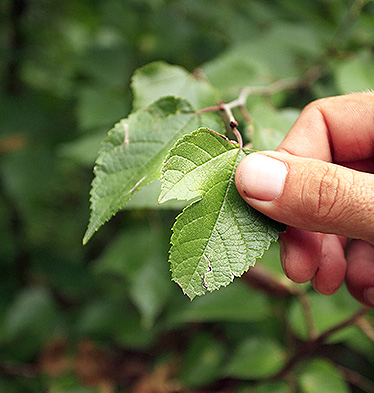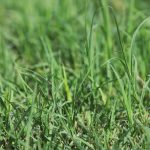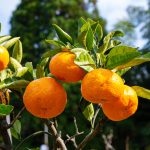While a poorly placed mulberry can be messy, its edible berries and healthy growth habit make it a wonderful choice for any Texas landscape.
Native mulberry often flies under the radar until mid-summer when the small tree begins dropping its succulent berries, staining sidewalks with red splats.
While a poorly placed mulberry could be considered a nuisance, the delicious edible berries and healthy growth habit make it a wonderful addition to any Texas landscape.
 There are two kinds of Texas mulberries native to our region: Red mulberry (Morus rubra) and little leaf mulberry (Morus microphylla). Both species are characterized by their gray bark and sometimes wildly different shaped lobed leaves with pointed, toothy edges that turn bright yellow in the fall. The biggest distinction between the two native species is the size of the leaves, up to 8 and 2 ½ inches, respectively.
There are two kinds of Texas mulberries native to our region: Red mulberry (Morus rubra) and little leaf mulberry (Morus microphylla). Both species are characterized by their gray bark and sometimes wildly different shaped lobed leaves with pointed, toothy edges that turn bright yellow in the fall. The biggest distinction between the two native species is the size of the leaves, up to 8 and 2 ½ inches, respectively.
Mulberry flowers are inconspicuous green tassels that yield famously juicy berries. The berries are loved by humans and wildlife alike, and can be enjoyed raw, dried, in drinks, or cooked and made into jelly, pie, or anything else you could dream up. The wood is also quite strong and has been used in Native American cultures for weaving, woodcraft, and medicine.
Be on the lookout, however, for an invasive species of mulberry that also exists in our region. The white mulberry (Morus alba) can be difficult to distinguish from the red mulberry (pdf), but the most notable distinction is in the leaves. The native species has a rough leaf texture on top and are slightly hairy underneath, compared to the invasive species with smooth, glossy leaves. White mulberry can also have white to light purple berries, but this feature is not always true and can be misleading.
If you’re interested in attracting wildlife to your yard or are cultivating a foodscape or vegetable garden, consider growing a native mulberry instead of struggling with cold-loving raspberries.
You will be rewarded with a hearty, beautiful tree that produces delicious, unique fruits that you may (or may not) enjoy sharing with some cedar waxwings.




